Ecommerce Loyalty Programs: Strategies for Development and Implementation

Explore how ecommerce rewards programs can transform your business. From solving common challenges to highlighting the best program types and showcasing successful implementations, this guide has it all. Ready to take action? Follow our step-by-step instructions or consult our experts for free.
Reading time: 24 min.
Acquiring new customers feels like climbing a financial mountain; sales can ebb and flow. Does this scenario sound familiar? You’re far from alone; it is a reality faced by any online store owner. But there is a proven strategy that offers rewards: loyalty programs.
Loyalty programs aren’t a modern invention—they’re deeply rooted in commerce history. But in the early 2000s, they truly came to life, adapting the age-old concept for the digital age. As online shopping grew, businesses realized they needed more than discounts to stand out. They needed meaningful connections, and loyalty programs became the bridge to foster those relationships.
Think of an ecommerce loyalty program as a lifeline that nurtures your best customers. At its core, it’s a VIP club where loyalty earns perks, whether discounts, exclusive access, or premium experiences. The result? A community of customers who stick around and actively champion your brand.
In this article, IntexSoft dives into the why and how of ecommerce rewards programs—exploring their benefits, sharing best practices, and illustrating real-world success stories.
Loyalty programs are not just about rewards points or perks—they bolster profit margins, drive consistent sales, and cultivate a sense of allegiance among shoppers.
Here’s how these strategic tools are changing the game to illustrate their actual impact:
| Key Challenges | How Loyalty Programs Solve Them | The Payoff |
| The High Cost of New Customers | Retaining existing customers costs significantly less than acquiring new ones. Loyalty programs shift the focus to rewarding repeat buyers, stretching marketing dollars further. | Businesses can ease the pressure of customer acquisition costs, boosting profit margins in the process. |
| Low Spend and Infrequent Purchases | Programs encourage bigger baskets and frequent transactions, offering enticing rewards for every dollar spent. | A consistent uptick in sales and average order value transforms occasional shoppers into dependable revenue streams. |
| Seasonal Slumps | Loyalty programs step in during quiet months with tailored incentives—bonus points or exclusive deals—to draw customers back. | Stable revenue flows year-round. |
| Customer Churn | Personalized rewards and exclusive perks make it harder for customers to leave for competitors, cementing their loyalty. | Retention becomes a cornerstone of success, lowering churn rates. |
| The Pricing Trap | Unique perks shift the battle from discounts to value, creating a narrative that is about experience, not just price tags. | Reduced reliance on price wars allows businesses to hold their ground and maintain healthier margins. |
| Lack of Organic Growth | Programs offering referral bonuses and rewarding brand advocates turn satisfied customers into an unpaid marketing force. | Word-of-mouth becomes a powerful driver, amplifying brand reach without the need for inflated ad budgets. |
| Limited Engagement Beyond Transactions | Loyalty programs keep the dialogue alive with gamified elements and meaningful content, even between purchases. | Businesses earn a permanent place in the minds of their customers, ensuring they return time and time again. |
The challenge for ecommerce businesses is to elevate loyalty programs from mere strategies to transformative experiences. That means understanding your audience with precision, tailoring rewards to resonate, and crafting a seamless journey where every interaction feels personal.
Customer retention remains, and the road is riddled with problems. Today’s landscape isn’t just about holding onto customers. Online retailers must redefine how businesses engage, inspire, and keep clients returning.
As you can see from the table above, there is a bucket of thorny problems. Now, let’s uncover all the essentials in more detail through our list:
The businesses that thrive in the long game aren’t always the giants or the bargain hunters. They’re the ones that forge connections and build loyalty, not just sales. Each challenge is an opportunity to craft an experience that keeps customers coming back by choice.
At IntexSoft, solving ecommerce problems is our specialty. We turn curveballs into profit-friendly solutions. Contact us for your free consultation today.
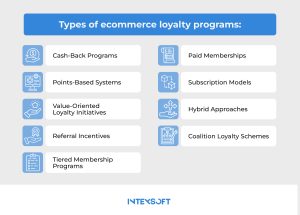
Nine key models stand out, each offering different paths to boost sales. Evaluate and choose those that align with your business vision.
A cash-back program is truly powerful. Customers earn a percentage of their purchase amount back as a credit. This approach almost always encourages repeat spending.
Amazon’s Prime Rewards Visa card, for instance, provides cash back on purchases both within and outside its platform. This makes the customer feel less likely to stray to competitors. For businesses, the result is a predictable revenue stream from repeat customers.
This model is the cornerstone of loyalty programs—and for good reason. It’s straightforward, widely understood, and highly effective. The concept is simple: the more customers spend, the more they gain. Each purchase contributes to building points, with every transaction fueling the fire. Over time, these points can be redeemed for valuable rewards, such as discounts, exclusive perks, or premium experiences.
Why does this work? Because it turns everyday shopping into a game of rewards, creating a cycle where customers are motivated to spend more frequently. In the following part of the article, we will give a great example—Sephora.
By aligning with customer values, businesses can foster deeper connections and turn buyers into brand advocates.
Consider this scenario: an online pet store knows its customers care deeply about animal welfare. The store launches a loyalty program where every purchase contributes to a cause—say, a $100 spend triggers a $10 donation to an animal rescue organization. The program offers more than points for customers—it provides a sense of purpose.
Why start hunting for new customers when the trusted ones you’ve already earned can light the way? Referral incentives transform your loyal base into your strongest allies—rewarding them with discounts, store credits, or exclusive perks for bringing in new faces. It’s a symbiotic exchange where the referrer and the newcomer gain mutual benefit.
This type of loyalty program for ecommerce rewards first-phase trust with immediate perks but promises greater rewards as customers climb the loyalty ladder.
For example, an online store might offer a Bronze, Silver, and Gold membership system. Bronze members receive basic discounts, while Silver members, having spent a certain amount, gain access to free shipping and early sales notifications. Gold members—those at the top tier—enjoy exclusive perks like personalized offers, priority customer service, and invitations to private events.
Customers are motivated to reach the next level, unlocking increasingly attractive rewards.
A bold yet highly effective strategy paid loyalty programs turn customer retention into an upfront investment. For a recurring fee, customers can join an exclusive VIP club and enjoy access to premium services, unique deals, and discounts.
The key here is exclusivity. Without tangible, valuable benefits, the program risks losing its appeal. Take Amazon Prime, a textbook example of success in this space. The subscription fee grants free shipping, streaming access, and exclusive deals—benefits so compelling that they’ve become an integral part of customers’ lives.
Subscription-based loyalty programs charge customers for premium perks.
Think of Walmart+ or Amazon Prime, where members pay a recurring fee for benefits—free shipping, exclusive deals, or early access to sales. These programs create a sense of exclusivity while fostering long-term commitment.
Why settle for one approach when you can combine several? Hybrid programs mix cash-back rewards, tiers, and subscriptions to offer a multifaceted loyalty experience.
Sephora, for example, combines a tiered system with exclusive perks, turning occasional shoppers into devoted customers. A hybrid strategy keeps the program dynamic, appealing to different customer preferences and ensuring broader engagement.
In a coalition program, multiple businesses join forces to reward customers across a network of brands.
For digital stores, this model can drastically improve customer engagement. Picture a shopper accumulating points from your store and using them at a partner retailer. Coalition schemes offer added value and convenience.
Here is a roadmap for crafting a program that truly works.
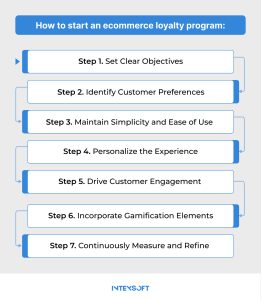
Before diving into program design, define measurable goals. For instance:
Understanding your audience is key. Use tools like Google Analytics, customer surveys, and purchase history to uncover preferences:
Complexity kills loyalty. That’s the stark truth of today’s ecommerce industry. A loyalty program that confuses or frustrates its members is destined to fail. The solution? Strip it down. Simplify every step to ensure customers not only join but stay engaged.
Customizing experiences is now a must, not an extra. Tailor the loyalty program to individual customers using data:
Keep your program on the front page with consistent outreach efforts:
Adding an element of fun can significantly boost participation:
Monitor performance using key metrics:
Loyalty programs offer a lifeline. As we have already highlighted, they reduce costs, increase revenue, and create predictability in an unpredictable world. The message for businesses looking to succeed is clear: build loyalty, and the rest will follow.
The data—and the stories—speak for themselves. Look closely at some remarkable examples.
Today, one of the thorny problems is skyrocketed customer acquisition costs. Loyalty programs sidestep this challenge by doubling down on retention.
Let’s consider Sephora’s Beauty Insider program. Instead of pouring endless resources into acquiring new customers, Sephora rewards its existing base with tailored discounts, exclusive events, and gifts. Two-thirds of their sales come from repeat customers, significantly lowering their CAC and boosting long-term profitability.
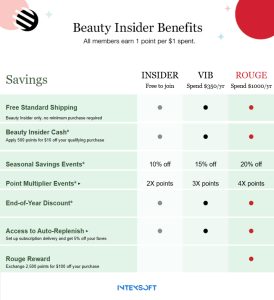
The Beauty Insider program has an ecosystem it has built around loyalty. At the heart of this is the Rewards Bazaar, a dynamic online platform that offers members the chance to redeem points for coveted, time-limited products or exclusive sets. It’s an experience designed to make members feel connected to the brand’s pulse.
But Sephora doesn’t stop there. The Beauty Insider Community creates a space where beauty enthusiasts converge. It’s a forum where users seek answers, share tips, and exchange product recommendations. The Members become ambassadors of Sephora.
Why is this program truly successful?
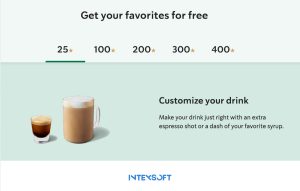
Starbucks Rewards is a prime example of a solution that reinforces customer engagement year-round, not only during holidays, always followed by stark lulls in the off-season.
When foot traffic ebbs during slower months, the coffee giant leans on its loyalty program to steady the ship. Through targeted offers—bonus stars for purchases on select days or discounts on specialty items—Starbucks keeps its loyal customers engaged.
For ecommerce, the lesson is clear: a well-crafted loyalty program mitigates the risks of seasonal slumps.
Dell’s approach to loyalty goes above and beyond discounts and promotional offers.
The Dell Rewards program is very well-structured to keep customers engaged through every step. Members earn rewards on purchases, which can be redeemed on future buys—creating a cyclical loop of spending. Dell layers in exclusive perks like early access to sales and priority customer service, reinforcing the brand’s commitment to its most dedicated buyers.
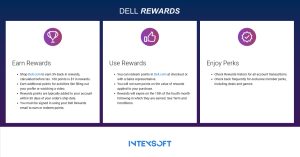
The genius of a well-designed loyalty program is its power to drive increased spending.
Look no further than Amazon Prime, a masterclass in tying loyalty to undeniable perks like free shipping and exclusive deals. The result?
Prime members spend an average of $1,400 annually compared to $600 for non-members. They become frequent, high-value shoppers, far outpacing their non-member counterparts in engagement and purchases.
A loyalty program like this transforms customer behavior, creating a cycle where spending feels not just habitual but rewarding.
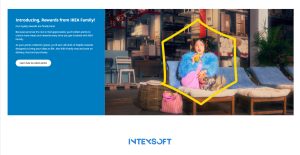
The brilliance of IKEA Family lies in its inclusivity and focus on value-added benefits. The program bridges the gap between the retailer and its customers, encouraging continued engagement.
The benefits it offers aren’t flashy, but they’re practical, meaningful, and uniquely IKEA. Let’s consider some of them:
PetSmart’s Treats program taps into customers’ emotional bond with their pets. Beyond points for purchases, the program rewards members for grooming services, training classes, and even donations to animal charities.

This sentimental approach reinforces the brand’s understanding of its audience’s priorities. By tying rewards to activities beyond traditional shopping, PetSmart ensures its customers see value in every interaction. This is the best way to deepen the customer’s connection to the brand.
Now that you have uncovered how rewards programs tackle persistent business challenges, delved into the essential program types, and examined success stories that set the standard, the next step is action. Building an effective program can feel like charting unknown waters, but you don’t have to go it alone.
IntexSoft’s experts stand ready to guide you. With a free consultation tailored to your business needs, we’ll help you transform knowledge into strategy. Reach out anytime—because in ecommerce, every moment counts.